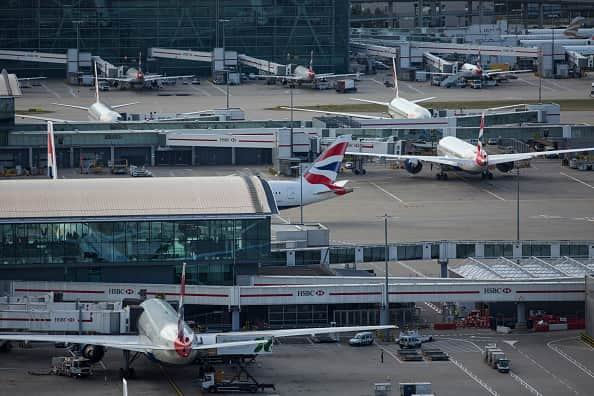RAAC crisis: Heathrow & Gatwick confirm areas containing collapse-prone concrete are being ‘closely monitored’
and live on Freeview channel 276
Two UK airports have confirmed they have locations containing RAAC - the collapse-prone concrete that is plaguing hundreds of buildings across the UK, including schools, which resulted in a disruption at the start of the new term this week.
In a statement, Heathrow said it was taking “remedial steps” to mitigate any safety risk, while Gatwick said it was constantly monitoring affected areas. Both airports said passenger safety and operations would not be affected by the building materials.
Advertisement
Hide AdAdvertisement
Hide AdHeathrow’s primary operational terminals, namely T2 and T5, were constructed at a time when the use of “bubbly concrete” had largely been discontinued. The airport had undertaken necessary repairs on a similar material called RAAC found in T3 last year.
However, recent problems identified in school buildings this year led to the abrupt closure of many institutions just before the start of the autumn term, turning RAAC into a political crisis with the government being pressured into addressing the risk it poses to the public at large.
The recent concern prompted Heathrow to carry out a fresh review of its RAAC management plans, but the airport has not altered its approach. Gatwick, on the other hand, would not disclose where its RAAC was located, but is understood to have been long aware of its presence, and to have had no indication of any risk.
A London Gatwick spokesperson said: “We have a register of locations containing RAAC on the airport campus, which are closely monitored through a regular comprehensive structural inspection regime. Our most recent inspection in June 2023 did not present any concerns and we will continue to monitor on a regular basis.”
Advertisement
Hide AdAdvertisement
Hide AdA Heathrow spokesperson said: “Industry has been aware and acting on the remedial steps that should be taken in buildings that contain this material.
“We, like many others, have been assessing our estate and will continue to mitigate the risk where this material is found. Passenger and colleague safety will always be our first priority and we will continue to update stakeholders across the sector as our plans for permanent solutions progress.”


A spokesperson for the Manchester Airports Group, which owns Stansted and Manchester airports, told The Guardian that there was “no likelihood” of their buildings containing RAAC, but the airports were being double-checked as a precaution.
Low-slung government office buildings and ambulance and fire stations built in the 1960s are among those most likely to be built with a lightweight - and prone to collapse - form of concrete.
